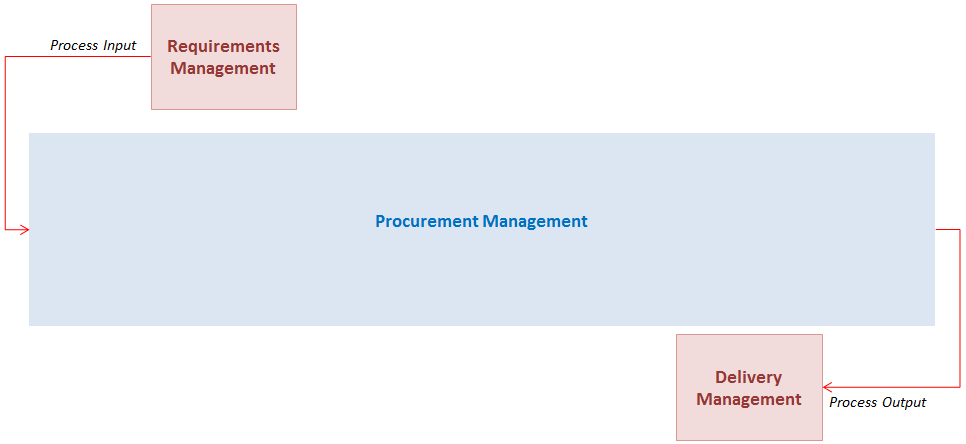PROCUREMENT MANAGEMENT INTRODUCTIONProcurement Management is a strategic competency and core component of any business success where there is a requirement to effectively and efficiently acquire suitable products and / or services for a Total Cost of Ownership which represents value.
It is necessary to impose a boundary around the process. Out-of-scope is Requirements Management (requirements identification and documentation), which is the input to the Procurement Management process. Also out-of-scope is Delivery Management (supplier, contract and delivery) which is an output of the Procurement Management process. All other activities necessary to complete a Procurement Event, from the first task of Governance to the last task of Procurement Closure, are included. The following figure is a simple pictorial representation of this scope. The following diagram is a similar representation but at a slightly more detailed level.
If we refer to Procurement Management as a Process Level 1, as shown in the figure above, then for the sake of consistency we need another term to refer to the next lower level within the process. The next lower level will be referred to as Process Level 2 or Sub-process. Hence the five sub-processes of the Procurement Management process are: Planning; Preparation; Implementation; Negotiation; and, Contracts.
Similarly, within the Planning sub-process, the next lower level will be referred to as Process Level 3 or Task. Hence, the five tasks within the Planning sub-processes of the Procurement Management process are: Governance; Requirements Validation; Sourcing Strategy; Procurement Strategy; and, Schedule, Financials and Quality Management. The level below the task and the lowest level used in this website is the Process Level 4 or Activity. A given task will be achieved by executing one or more discrete activities. Throughout this website the terms Process, Sub-process, Task and Activity will be used rather than Level 1 Process, Level 2 Process, and so forth. |
Site Map
|
Follow Us
|
Site Information
|


